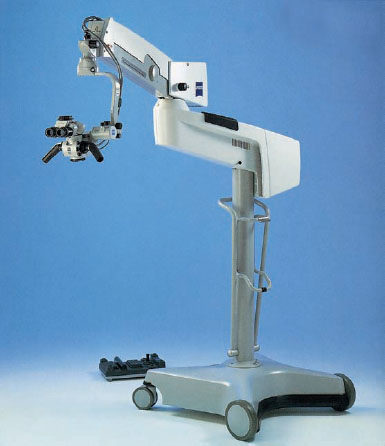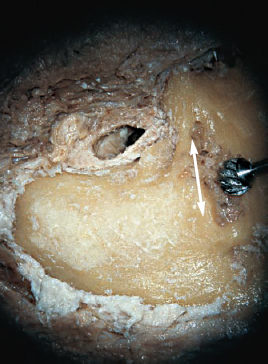4 Instrumentation and Usage The microscope and drill have played a major role in refining otologic and neurotologic techniques. In temporal bone surgery, good control of the microscope is very important. High-technology surgical microscope. As expected, use of a high-technology microscope improves the surgeons view, which further enhances the surgical result. However, in many instances, the available microscope is not used to its full advantage. The following points should be kept in mind while using a microscope: The general surgical procedure carried out by all surgeons, including the otorhinolaryngologist, is soft tissue surgery. However, the main procedure carried out on the temporal bone is delicate bone surgery, which is the privilege of the otorhinolaryngologist. The burr is the “scalpel” of temporal bone surgery, and special training is required to gain the ability to use it accurately. Novice use of this dangerous instrument can easily result in serious complications. In addition, after the fundamental principles of microscopic ear surgery were introduced by Wullstein and Zöllner in the 1950s, a variety of microsurgery instruments were developed for middle ear and related surgery by pioneers during the second half of the twentieth century. Today, the main features of middle ear instruments are similar and they are all equally efficient. However, the quest for easier to use and more convenient instruments continues. The surgeon should improve his or her skills to use microsurgery instruments effectively. See also page 185. A drill system should be provided; a good system will have the following three main features: An irrigation system should be provided, both for the laboratory and the operating room. One of the main mistakes while drilling is not using continuous irrigation. This results in the following problems: All these problems contribute to an increased risk of complications. For example, facial paralysis may occur as a result of direct damage to the nerve because of reduced vision, or simply as a result of overheating of the bone adjacent to the nerve. Although several types of burr are available on the market, there are two main types: The cutting burr has the following advantages over the diamond burr: The cutting burr is preferable for use in the cortical bone, and away from critical structures in other parts of bone. Every surgeon should be aware of their personal limits, and when they should change to using a diamond burr. The diamond burr has the following advantages over the cutting burr: Close to the facial nerve and other vital structures, use of the diamond burr is preferred. However, it should be kept in mind that the diamond burr may also cause facial paralysis due to overheating or excessive pressure. Other points regarding burr usage are summarized below: The burr also has an important role in controlling bleeding through the bone. For control of bleeding through the bone, the following alternatives may be used: The technique of stopping oozing through the bone by the use of a drill is relatively simple; on a low-speed setting, the largest possible diamond burr should be moved along the surface of the bleeding area without irrigation.
Microscope

The Drill and Microsurgery Instruments
Key Points in Burr Usage
Burr Usage in Bleeding Control
Burr Usage around the Critical Structures

![]()
Stay updated, free articles. Join our Telegram channel

Full access? Get Clinical Tree


